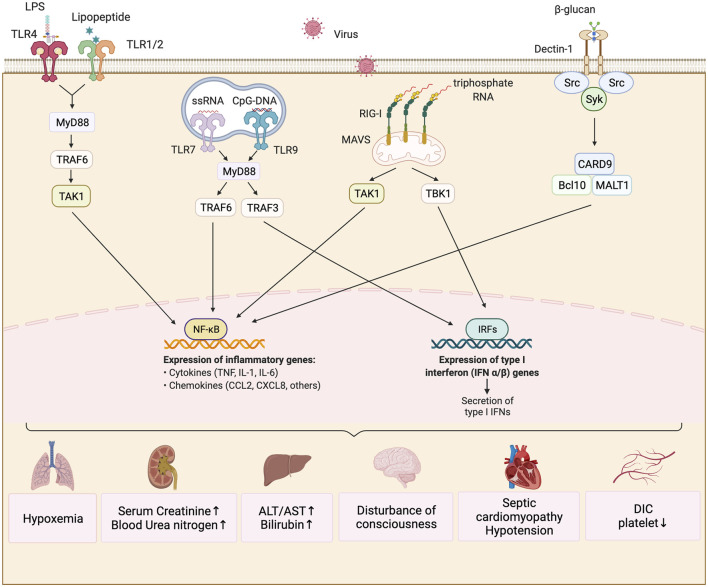FIGURE 2.
Immunity mechanism of sepsis induced by different pathogens. The predominant pathogens that cause sepsis are bacteria, fungi and viruses. The lipopolysaccharide (LPS) in the outer membrane of Gram-negative bacteria can be recognized by TLR4, while the lipoprotein in the cell wall of Gram-positive bacteria can be bound to TLR2/TLR1. They activate the downstream signaling molecule of MyD88 and ubiquitinate TRAF6. Ubiquitinized TRAF6K recruits the TAK1-TAB1/2 protein complex, while TAK1 kinase activates the transcription factor NF-kB and facilitates the production of key pro-inflammatory cytokines such as IL-1, IL-6, and TNF. Fungus β-glucan and mannose are commonly recognized by CLRs which mobilizes Syk protein kinases to coordinate the innate immune response, and eventually activate NFkB to produce pro-inflammatory factors through the CARD9/BCL10/MALT1 complex. iIfluenza viruse causing common viral infection in sepsis can be recognized by RIG-I in the cytoplasm and signal to TAK1 and TBK1 through oligomerization of MAVs molecules on mitochondria, which ultimately activates NF-kB and IRF family transcription factors and promotes the production of inflammatory factors and type 1 interferon. These changes cause damage to important viscera of airframe.

